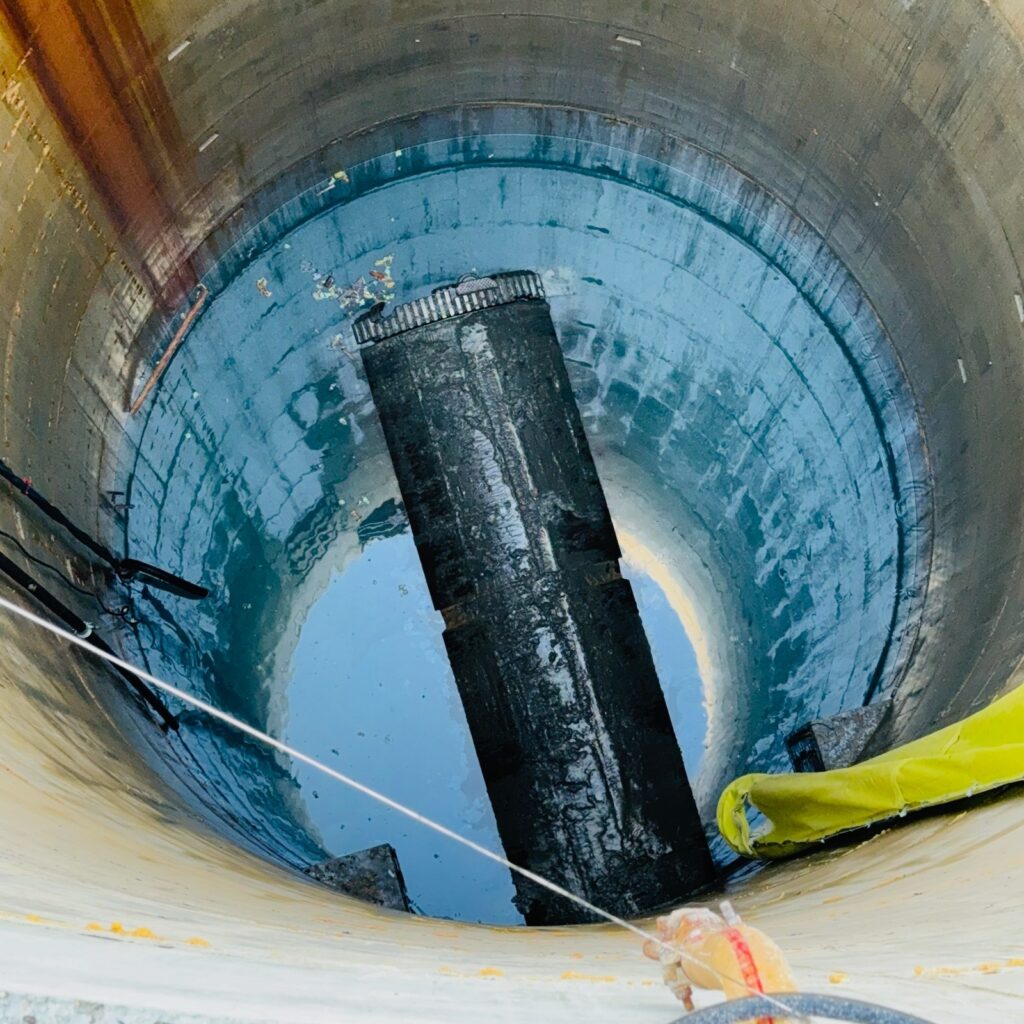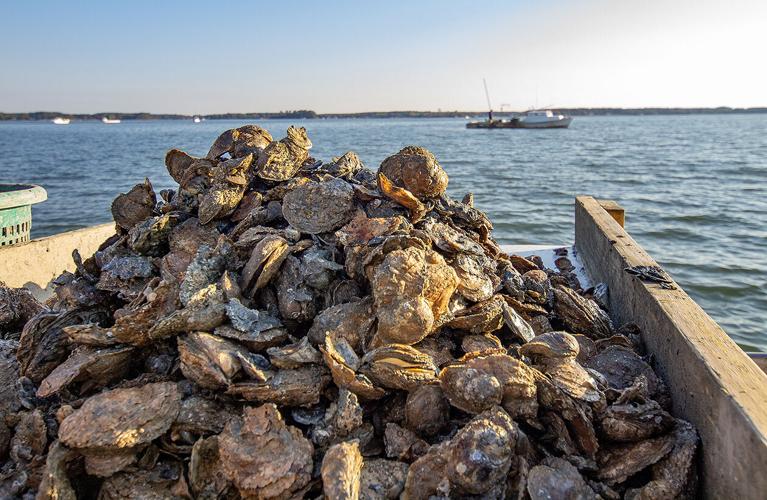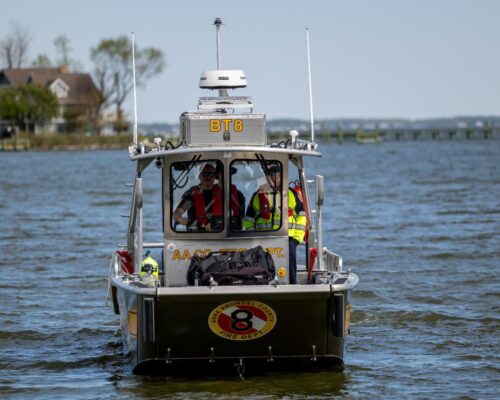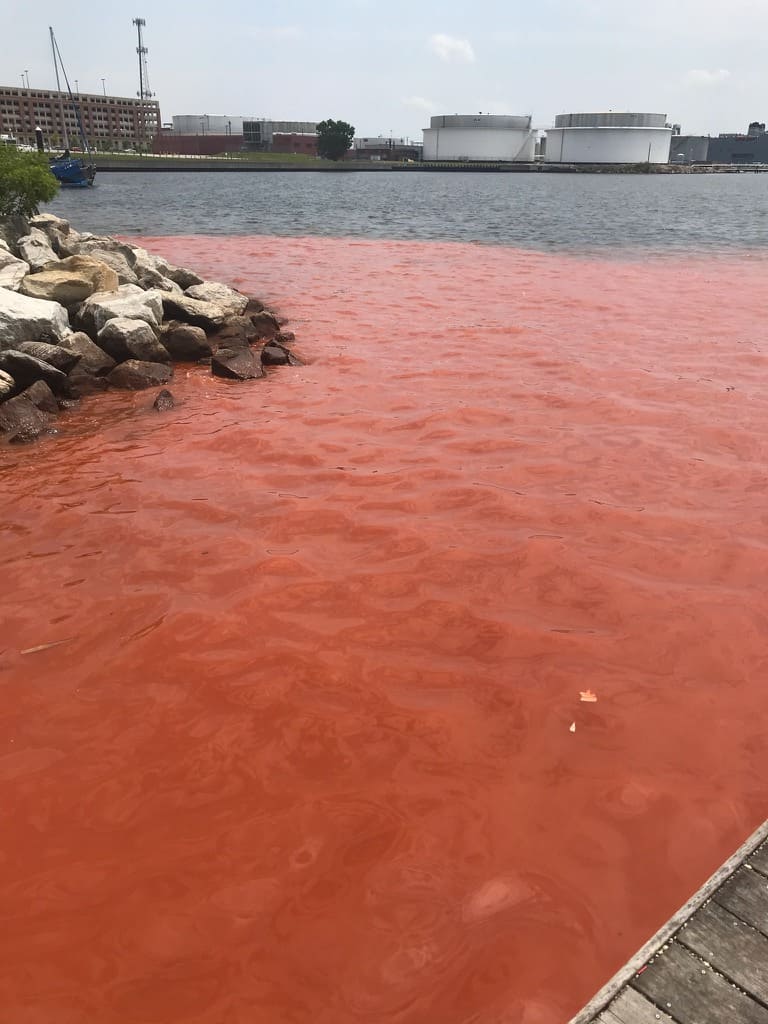After 16 months underground, a massive tunnel-boring machine christened Hazel and her RiverRenew crews finished boring the city’s 2.2-mile-long Waterfront Tunnel ten days ago. The tunnel is 12 feet in diameter and an astonishing 100 feet below sea level. It runs from AlexRenew’s headquarters and wastewater treatment plant down along Cameron Run to the Potomac, then upriver to its end—a 100-foot-deep shaft at the foot of Pendleton Street, immediately south of the river’s Oronoco Bay.
Last Thursday, Hazel caught her first glimpse of daylight when her crew raised her to the surface there beside the river she was designed and built to protect. Her tunnel will prevent millions of gallons of sewage overflow from polluting the region’s waterways.
The difficult problem that Hazel came to solve is a combined sewer system that dates to the 1860s. It serves about 6 percent of Alexandria, mostly below Old Town beside the Potomac. Combined sewers transport both sewage and stormwater in the same pipe, a supposed municipal cost-saving measure at a time when the city was small and the land around it rural. In dry times, both sewage and runoff ran to the city’s primitive waste treatment plant. When enough rain fell to exceed the system’s capacity, however, both rainwater and sewage overflowed directly into the river.
The engineers who designed the combined system never anticipated the growth of Alexandria, especially its 20th-century roadways, concrete parking lots, and rooftops that sent increasing quantities of rainwater into the system. By the dawn of the 20th century, civil engineers had realized the mistake and begun building separate drainage systems for rainwater runoff and sewage in newer sections of the city.
The damage had been done, though, for the busy port of Old Town had built up houses, businesses, and paved streets over the old system. Tearing it up to separate the pipes would have paralyzed everyday life. For more than a century now, and increasingly so with climate change, rains cause Alexandria’s combined sewer system to spill to the Potomac River through four outfall pipes. Since these overflows contain raw sewage, they pose a risk to human health, degrade aquatic habitats, harm the Chesapeake Bay, and litter shorelines. This has posed a chronic U.S. Clean Water Act violation for half a century.
The tunnel largely follows Alexandria’s waterfront before taking a sharp bend in Jones Point Park and running straight back to AlexRenew below Church Street. This shaft will collect combined sewage overflows from existing outfalls and direct these flows to a modern wastewater treatment plant.
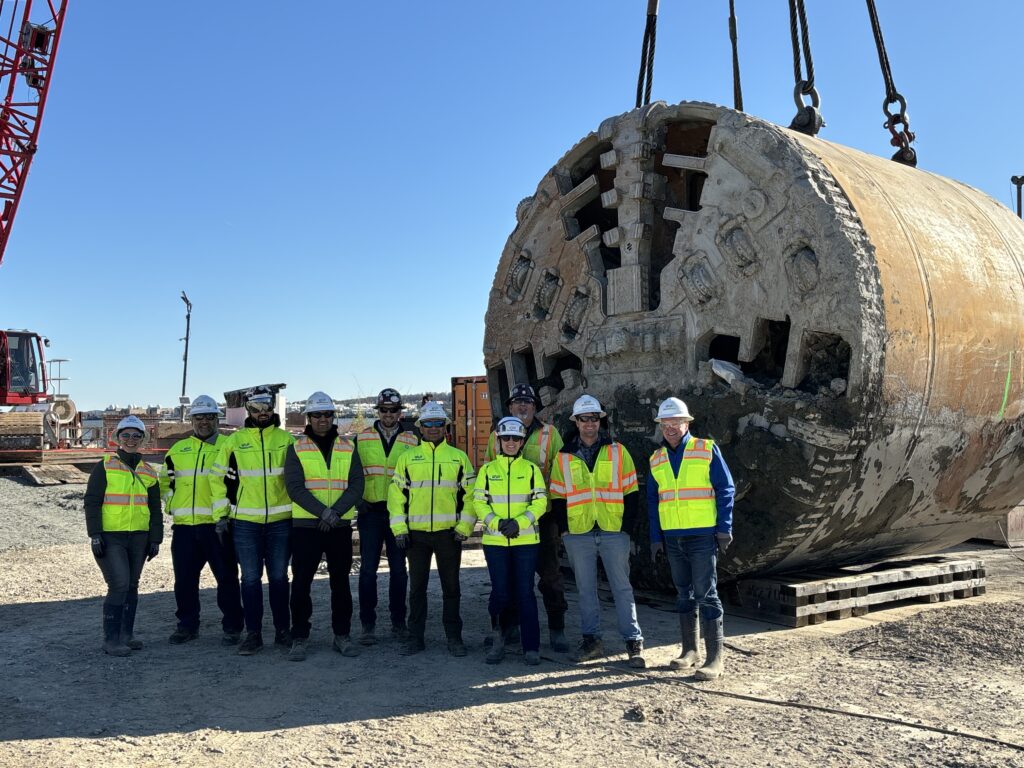
After years of planning, coordination, and construction, Hazel began her “cruise” in November 2022. Since then, she and her highly skilled crews have been carefully constructing her now concrete-lined tunnel from the inside out. You can see how Hazel and her crew completed this once-in-a-generation project at the Waterfront Tunnel Page.
Hazel, named after the late environmental activist Hazel Johnson, is a state-of-the-art tunnel-boring machine weighing 380 tons and longer than one-and-a-half football fields.
“While Hazel is just a machine, she has embodied the heart and grit of our team, and like her namesake, has set a foundation for a healthier environment for our community, wildlife, and future generations. The collective efforts of our team to achieve this momentous milestone are nothing short of awe-inspiring. Their dedication and perseverance pave the way for a brighter future for the Potomac River,” says Justin Carl, General Manager and CEO of AlexRenew.
The problem of river pollution from 19th-century combined sewer systems has plagued older cities all over the United States for years, including Washington, D.C., Richmond, Lynchburg, and Lancaster, Pennsylvania. All have made progress, under both state and federal legal pressure, with encouraging improvements in water quality. Alexandria anticipates completion of its project next year.
In celebration of Hazel’s milestone, AlexRenew will host an open house at 501 North Union Street on Saturday, April 13, 10am – 4pm. The event is open to all ages and is pet friendly. Attendees will be able to learn about tunneling, see displays, and get a photo op with Hazel.

